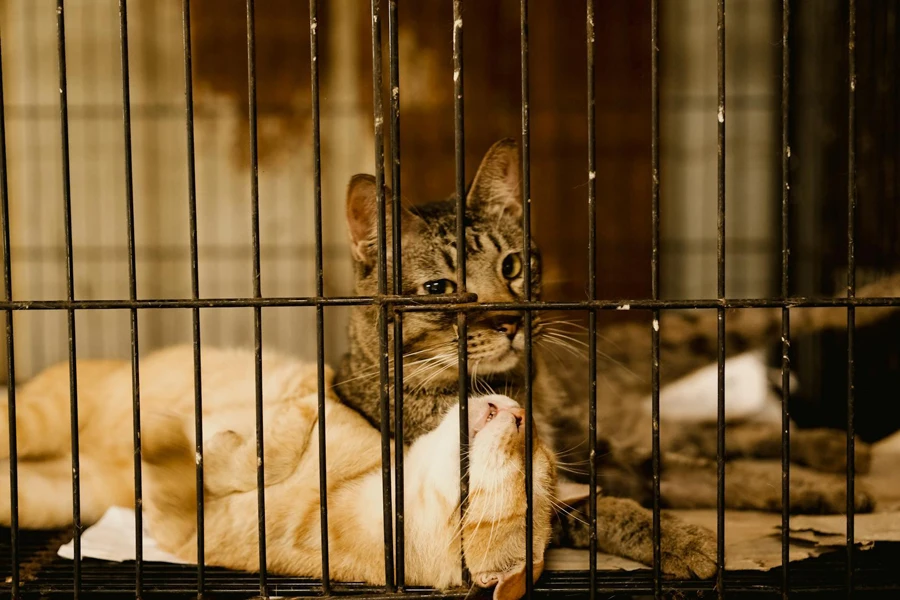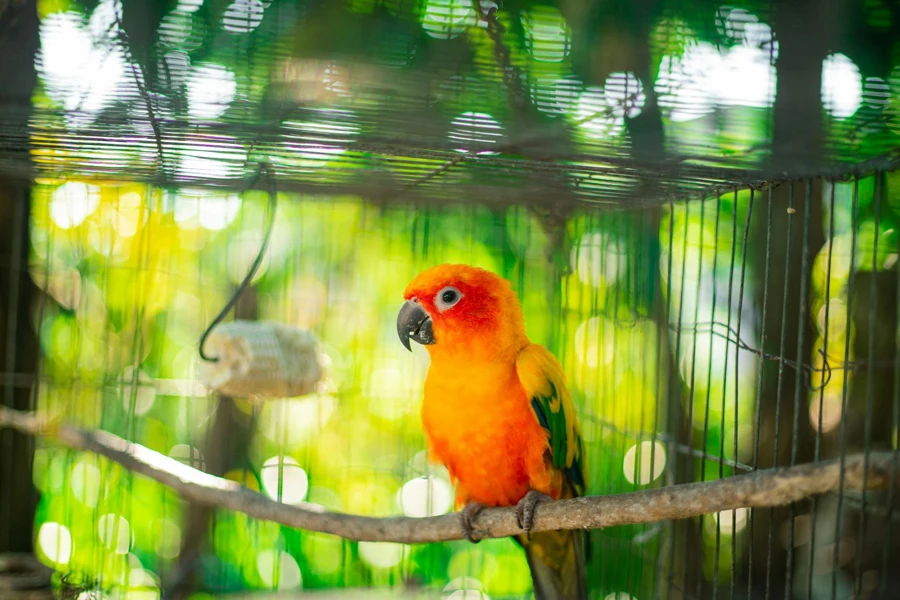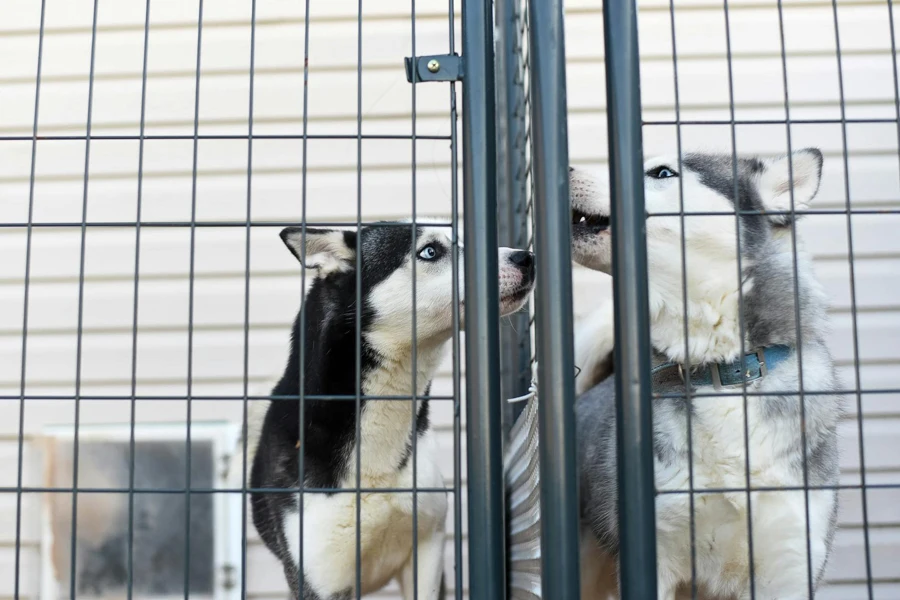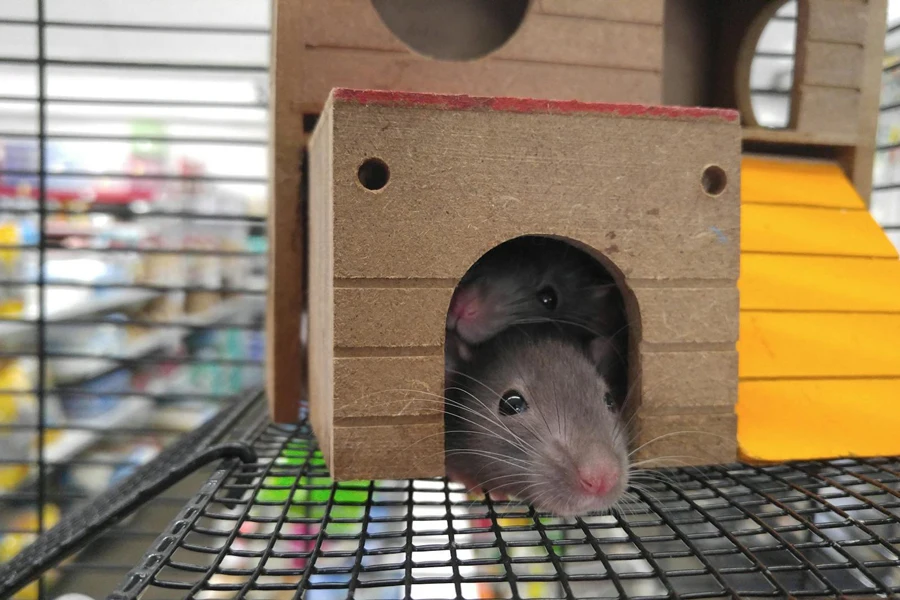Table of Contents
● Introduction
● Market overview
● Things to consider when selecting pet cages
● Types and their features
● Conclusion
Introduction
Selecting the optimal pet cage transcends mere aesthetics; it is essential for ensuring safety, comfort, and convenience. The market is witnessing significant innovation, driving the development of smarter, more adaptable enclosures. These advanced cages blend seamlessly with modern home decor while enhancing the functionality and well-being of pets. Manufacturers are focusing on durable, high-quality materials and incorporating technology for better monitoring and ease of use. The growing demand for customization reflects a shift towards more personalized pet care solutions, catering to a diverse array of pet needs and owner preferences.

Market overview
The pet cage market is experiencing robust growth, projected to escalate from USD 246.67 billion in 2023 to USD 368.89 billion by 2030, at a CAGR of 5.93%, according to Verified Market Research. This expansion is fueled by increasing trends in pet ownership and a rising disposable income, enabling consumers to invest in high-quality, visually appealing pet cages. As pets are increasingly viewed as integral family members, there is a significant demand for cages that ensure safety and comfort while fitting seamlessly into home environments.
Moreover, there is a notable shift towards innovative cage designs that incorporate smart features like IoT connectivity, which caters to the needs of tech-savvy pet owners. The market is also responding to the growing demand for eco-friendly materials and customization options, allowing for a more personalized approach that meets the diverse requirements of various pet species and owner preferences. This evolution is supported by the expansion of e-commerce, simplifying access to a wide array of pet cage options and further stimulating market growth. These trends highlight a broader market shift towards specialized, user-centric products that prioritize pet well-being and integrate smoothly with contemporary lifestyle choices.

Things to consider when selecting pet cages
Size and space
Ensuring the pet cage is appropriately sized is crucial for the pet’s comfort. The cage should be large enough for the pet to stand, turn around, and lie down without restriction, particularly for pets that spend substantial time confined. It’s recommended to choose a cage that is at least 5 inches taller and longer than the pet’s height and length from head to tail. This size consideration prevents cramping and allows for adequate movement, which is essential for the pet’s physical health and psychological well-being.
Material and durability
Material and durability are fundamental considerations in the design of pet cages, as they directly impact the longevity of the cage and the safety of the pet. High-quality, durable materials such as heavy-duty steel, robust plastics, or treated woods are commonly used to ensure that cages can withstand the rigors of everyday use and the natural behaviors of pets, such as chewing or clawing. These materials are chosen not only for their strength but also for their resistance to corrosion, wear, and easy maintenance. Additionally, the materials must be non-toxic to ensure that pets are not exposed to harmful chemicals if they chew on or come into contact with their cages. Durability also extends to the hardware used in the cage, such as hinges and locks, which must be strong enough to resist breaking or bending, thereby ensuring the pet’s security at all times.
Design and functionality
The design and functionality of pet cages are critical in enhancing living conditions for pets, focusing on safety, comfort, and engagement. Modern cages feature easy-clean surfaces, customizable parts, and durable construction to withstand daily use, catering to both active and restful periods. For example, bird cages may include multiple perches and play areas, while cages for small animals offer modular extensions for exploration. Travel cages for dogs and cats often have collapsible designs for easy transport and secure locking mechanisms for safety during movement. Additionally, many cages are designed for easy maintenance with removable trays and effective ventilation systems to ensure a healthy environment, creating a home-like space that supports pet well-being and simplifies upkeep for owners.
Safety features
Safety features in pet cages are essential to ensure the security and well-being of pets while under confinement. These features include secure latches and robust locking mechanisms that prevent pets from accidentally escaping and protect them from external hazards. Many modern cages also incorporate reinforced structures to withstand impacts and resist wear, along with smooth interior surfaces to prevent injuries from sharp edges. For added safety during transportation, especially for air travel, cages might be equipped with tie-down holes for securing them in vehicles or additional locks that meet airline regulations. Moreover, materials used in the construction of pet cages are often chew-proof and non-toxic, ensuring that pets do not ingest harmful substances if they attempt to chew on their enclosures. These safety considerations are vital for creating a secure environment that keeps pets safe while also giving owners peace of mind.
Ventilation
Proper ventilation is a crucial aspect of pet cage design, essential for maintaining a healthy and comfortable environment for pets. Adequate airflow helps to prevent the buildup of ammonia and other harmful gases that can emanate from waste products, which are especially detrimental to the respiratory health of the animals. Cages designed with sufficient ventilation typically feature wire mesh or perforated sides that allow fresh air to circulate while containing the pet securely. This design not only ensures that the pet has a constant supply of fresh air but also helps to regulate the temperature within the cage, preventing overheating and providing a conducive environment for the pet’s well-being. Effective ventilation is particularly important in maintaining an odor-free and hygienic space, contributing significantly to the overall health and comfort of confined pets.

Types and their features
Dogs and cats
Pet cages for dogs and cats often emphasize mobility and safety. Many models are portable and collapsible, making them suitable for transportation and easy storage. Cages are designed with a focus on safety, comfort, and convenience, featuring sturdy construction from materials like heavy-duty steel or reinforced plastics to withstand regular use and animal behaviors. These cages often include secure, tamper-proof locking mechanisms that are simple for humans to use but challenging for pets to manipulate, along with collapsible designs that enhance portability for easy transport and storage. Comfort features may include padded floors or insulation, especially in outdoor kennels, to protect against extreme temperatures, while adequate ventilation is ensured through mesh panels or ventilation holes. Additionally, these cages are designed for easy cleaning, with features like removable trays, and may include adjustable dividers to accommodate growing pets or multiple animals, as well as mounts for accessories like food bowls and toys to enhance the living environment for dogs and cats.
Birds
Bird cages are designed to cater to the specific requirements and behaviors of avian pets, emphasizing ample space, safety, and enrichment. These cages are typically constructed from durable, non-toxic materials like stainless steel or coated wire to prevent rust and ensure easy cleaning. They feature vertical bars and multiple perches of varying diameters to facilitate natural climbing and perching behaviors, which are crucial for birds’ physical health and mental stimulation. Good ventilation is provided through the wire spacing, which also allows for excellent visibility. To enhance interaction and keep birds engaged, bird cages often include swing-out feeders, water dishes, and toy hooks. Safety is further ensured with secure door locks to prevent escapes, and the cages often have slide-out trays or removable bottoms to simplify the cleaning process.
Small animals
Cages for small animals such as rabbits, guinea pigs, and hamsters are specifically engineered to meet their distinct needs, focusing on safety, comfort, and the natural behaviors of these pets. These cages typically feature modular designs that allow for customization and expansion as needed, incorporating durable materials like wire mesh for ventilation and visibility, along with solid sections for privacy and security. The design often includes multiple levels or platforms to encourage natural climbing and exploration behaviors, with easy access points for cleaning and interaction. Safety features such as secure latches prevent escapes, while the inclusion of accessories like hideaways, chew toys, and tunnels cater to the physical and mental stimulation of small animals. These cages are also designed with ease of maintenance in mind, featuring pull-out trays for simple cleaning and non-toxic materials to ensure the health and well-being of the pets.

Conclusion
The exploration of the pet cage market highlights significant advancements in functionality and design tailored to the needs of various pets, from secure and portable environments for dogs and cats to activity-enhancing features in bird cages, and modularity in small animal habitats. Consumer feedback and expert insights continue to influence these developments, emphasizing the importance of functionality, ease of use, and aesthetics. Choosing the right cage is crucial for ensuring the safety, comfort, and overall well-being of pets while meeting the lifestyle preferences of owners. As the market evolves, diverse and innovative designs enable pet owners to significantly enhance their pets’ quality of life, reflecting a deep commitment to providing the best care and environment for their animals.



